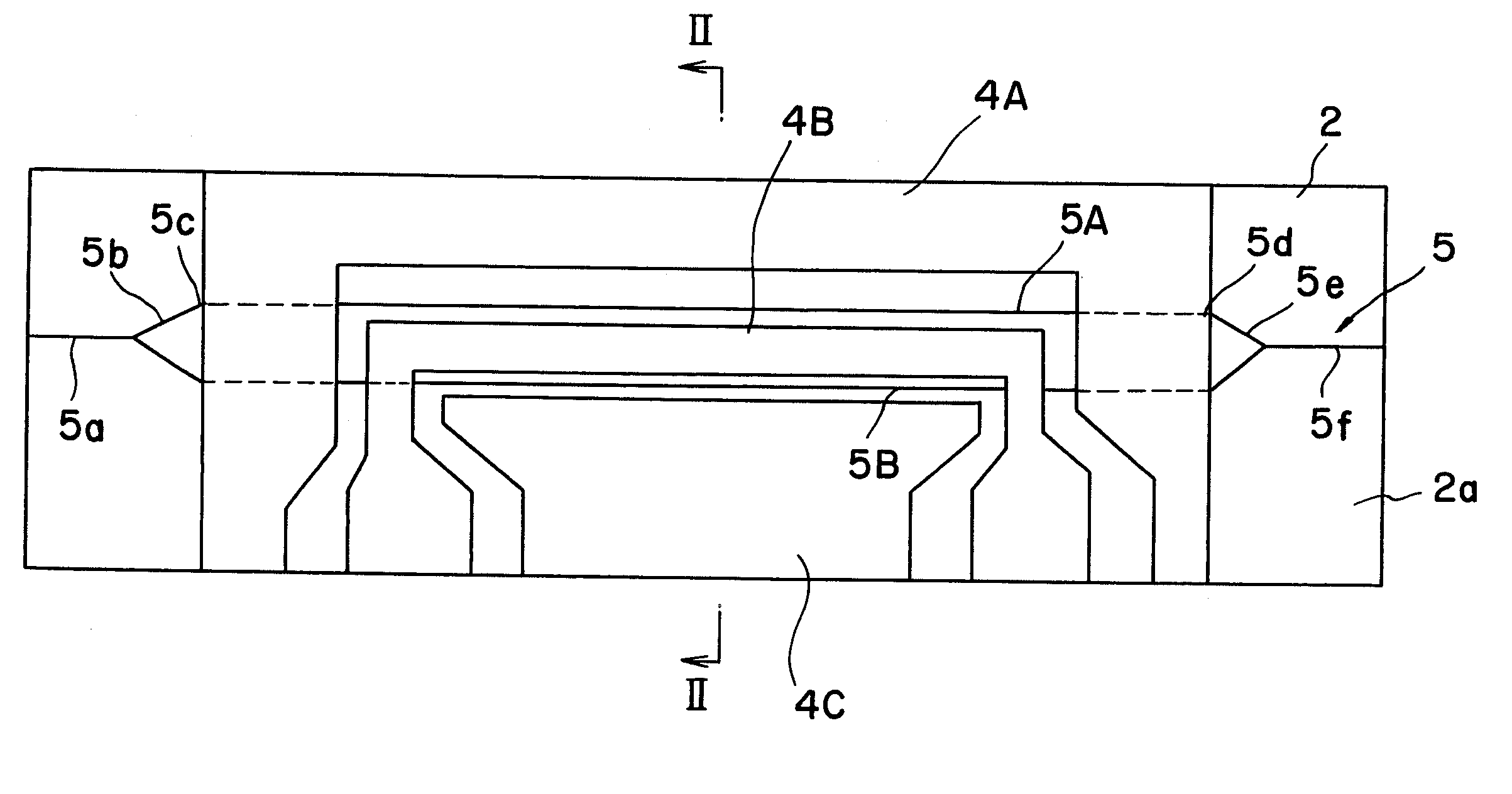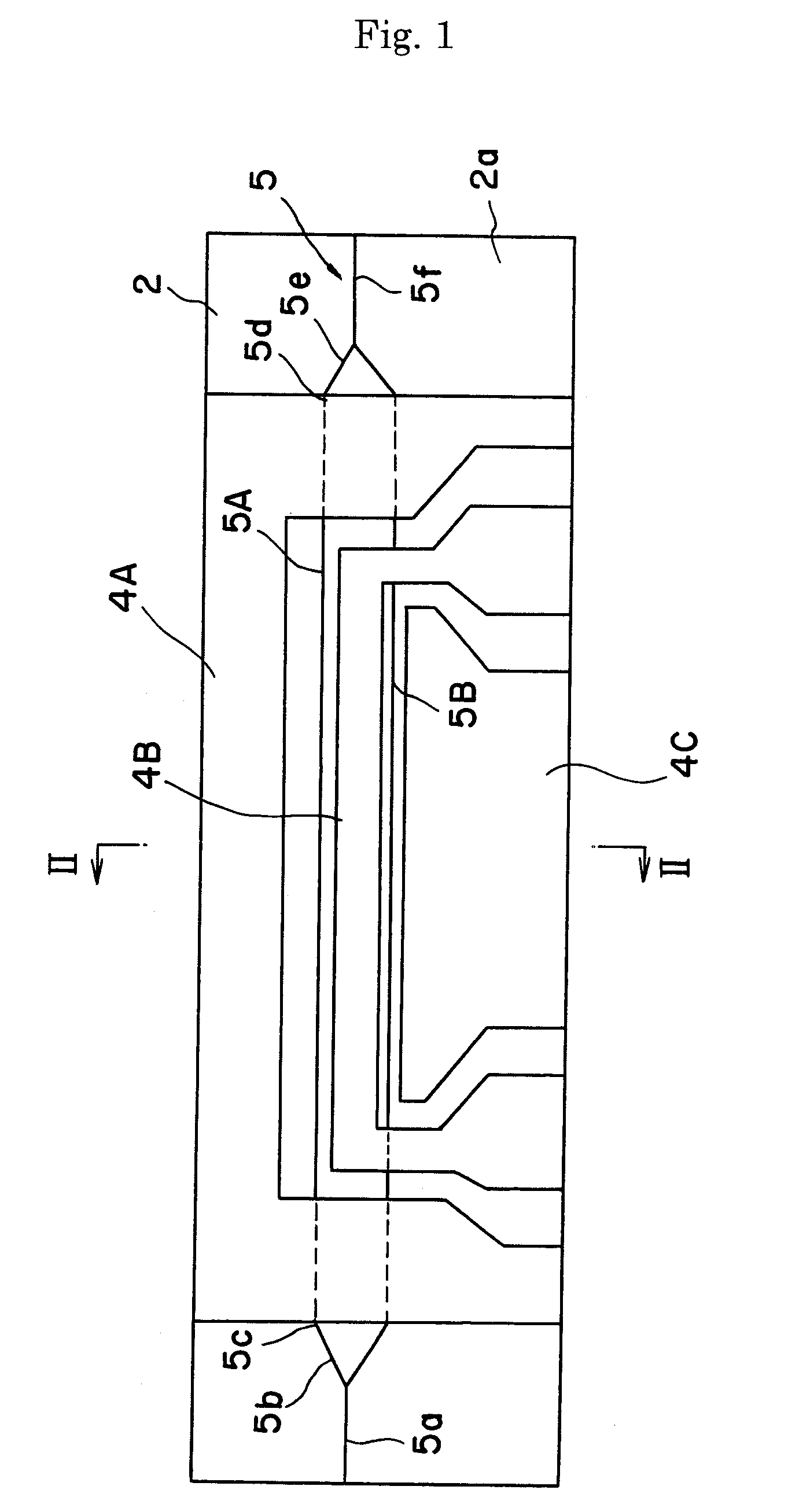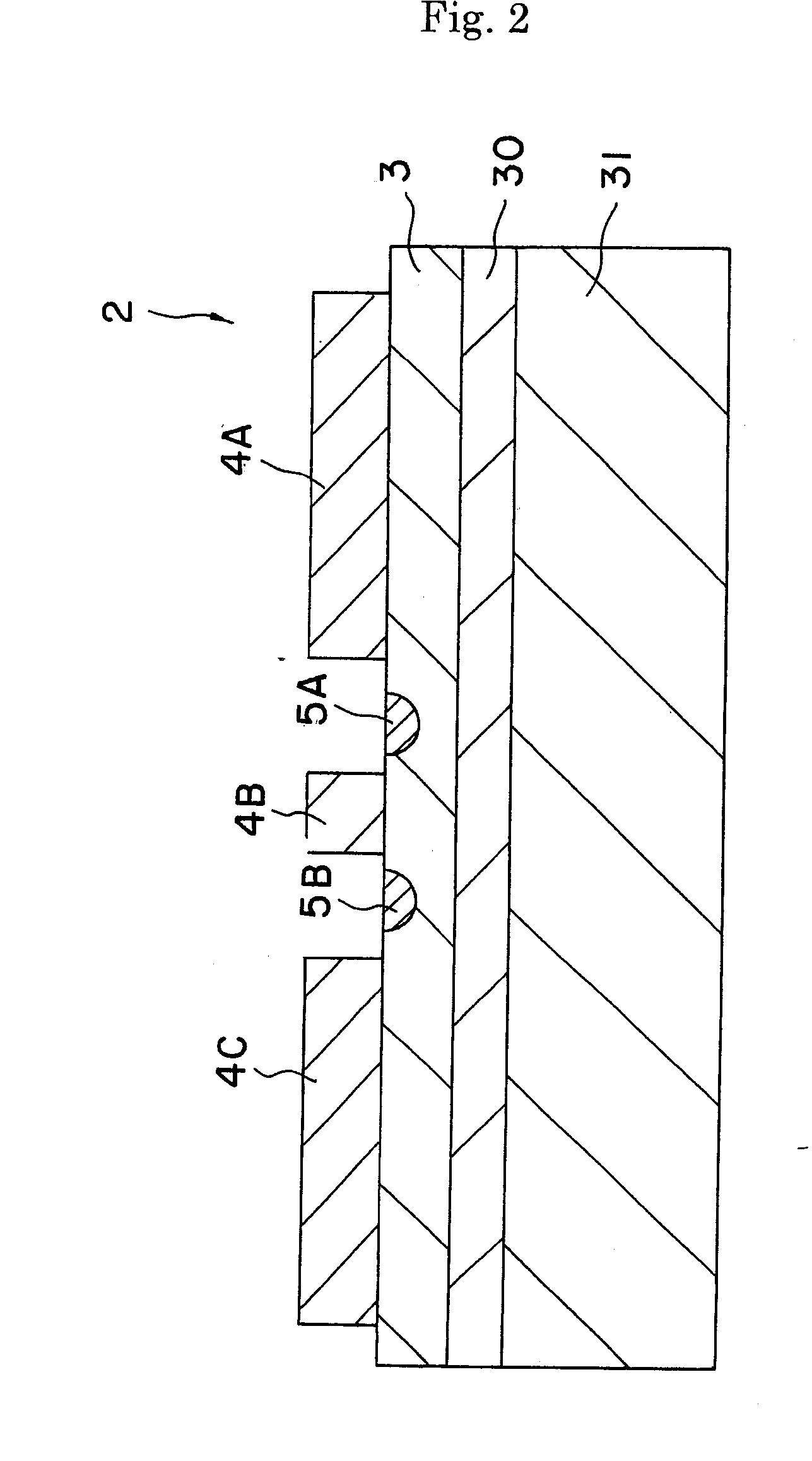Optical waveguide devices
a waveguide and optical waveguide technology, applied in the direction of optical waveguide light guides, optical light guides, instruments, etc., can solve the problems of increased insertion loss and cross talk at the crossing part, difficult to lower the curvature radius of increased optical radiation loss in the curved part of the optical waveguide. achieve the effect of constant thickness
- Summary
- Abstract
- Description
- Claims
- Application Information
AI Technical Summary
Benefits of technology
Problems solved by technology
Method used
Image
Examples
example 1
[0062] The optical modulator 1 of FIG. 1 was used. Specifically, an X-cut 3 inch wafer (made of LiNbO3 single crystal) was used as a substrate. An optical waveguide 5 of Mach-Zehnder type was formed in the surface area of the wafer by titanium diffusion and photolithography. The size of the optical waveguide 5 may be set at, for example, 10 μm at 1 / e2. The CPW electrode pattern was formed by electroplating. The gap between the signal and ground electrodes were made 40 μm, the electrode thickness was made 28 μm and the electrode length was 40 mm. A dummy body for polishing was adhered onto a surface plate for polishing for performing thinning and polishing. The substrate for modulator was adhered thereon with a thermoplastic resin while the electrode face was orientated downwardly. The substrate 4 was thinned to a thickness of 10 μm by means of horizontal polishing and polishing (CMP). The substrate was then adhered onto a plate-shaped supporting body 31, and the substrate was subjec...
experiment 2
[0065] An optical modulator was fabricated according to the same procedure as the Experiment 1. The radiation loss per an angle of curvature of 5° was measured for each optical modulator. The substrate thickness was 6 μm, Tti (thickness of titanium film before the titanium diffusion) was 0.70 μm and Wti (width of titanium film before the titanium diffusion) was 5 μm, 7 μm, 9 μm or 11 μm. The results were shown in FIG. 8.
[0066] As can be seen from FIG. 8, the radiation loss per an angle of curvature of 5° can be considerably reduced, by elevating Wti (width of titanium film before the titanium diffusion) to, especially, 7 μm or larger.
experiment 3
[0067] An optical modulator having the shape of FIGS. 1, 2, 5 or 9 was produced, according to the same procedure as the Experiment 1. The following examples were performed: (1) the groove was not provided, (2) the grooves 20 and 35 were provided and the groove 21 was not provided and (3) both of the grooves 20A and 21 were provided. Each of the widths “W1” and “W2” of the grooves 20, 20A, 21 and 35 was made 5 μm, and the distances “d1” and “d2” between the grooves 20, 21 and the beam center of the optical waveguide were made 4 μm, respectively. The depth “Dg” of each of the grooves 20, 20A, 21 and 35 was made 2 μm. The thickness of the optical waveguide substrate 3 and the radius “R” of curvature of each of the curved parts 5c to 5f were changed as shown in table 2. The radiation loss per an angle of curvature of 180° was estimated by means of beam propagation method. The results were shown in table 2.
TABLE 2Thickness ofThickness ofLN substrate:LN substrate:8 μm8 μmRadius ofRadius...
PUM
 Login to View More
Login to View More Abstract
Description
Claims
Application Information
 Login to View More
Login to View More - R&D
- Intellectual Property
- Life Sciences
- Materials
- Tech Scout
- Unparalleled Data Quality
- Higher Quality Content
- 60% Fewer Hallucinations
Browse by: Latest US Patents, China's latest patents, Technical Efficacy Thesaurus, Application Domain, Technology Topic, Popular Technical Reports.
© 2025 PatSnap. All rights reserved.Legal|Privacy policy|Modern Slavery Act Transparency Statement|Sitemap|About US| Contact US: help@patsnap.com



